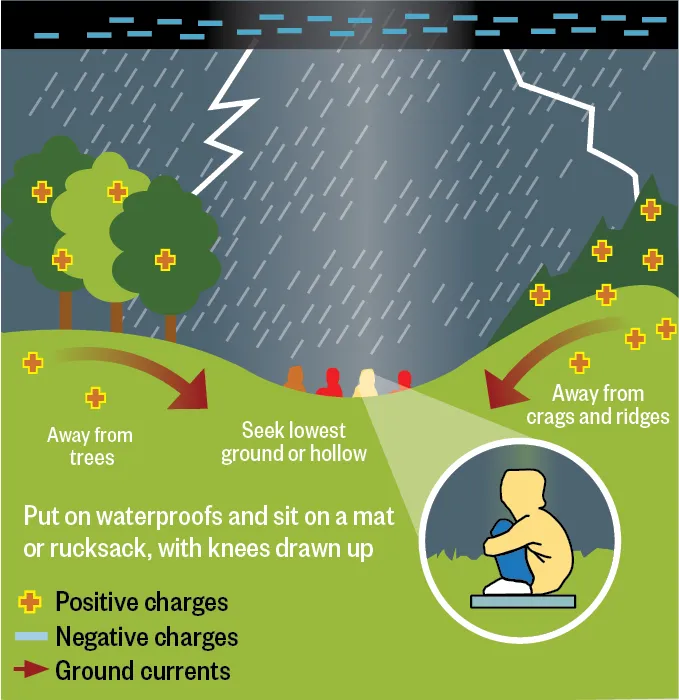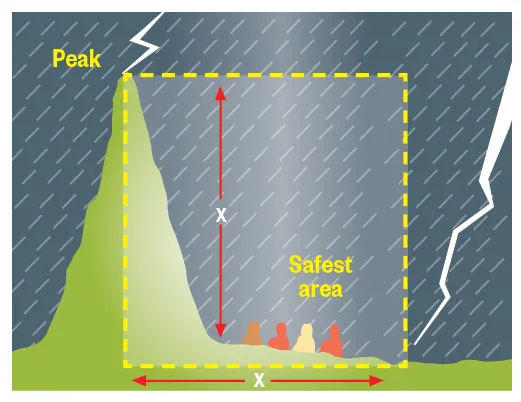Lightning strikes reportedly killed two walkers in the Brecon Beacons recently. What’s the best way of staying safe in the outdoors when stormy weather rolls in?
Around 300,000 lightning strikes hit the UK every year. On a thundery day, there may be 10,000 lightning strikes in Britain. On average, someone is hit once every 6,000 strikes. Before the recent tragedy on Pen y Fan, 47 people had died from lightning strikes in the UK in 25 years.
“Lightning is a real hazard, and should be taken seriously,” confirms John Cousins, mountain guide and chief executive of Mountain Training UK. John advises walkers to act on the weather forecast. “Fortunately, short-term forecasts are really good now.” If thunderstorms are forecast, the advice is strightforward: don’t go walking in dangerous places such as hills and exposed ridges. “You can always go away and come back another time.”
Even if the forecast is good, if you are up in the hills it’s important to keep a lookout for unexpected bad weather. “You can sense a coming thunderstorm – there are real hints,” says Cousins. “Your hair stands on end.”
The most clear-cut signs are obviously lightning and thunder. But how far away is the storm? British children used to count the seconds between the ‘flash and bang’ and say that was the number of miles away the storm was. Perhaps it was to reassure them or keep them quiet. The truth, however, is that you have to divide that time lag by five. So if there is a ten-second gap between lightning and thunder, the storm is only two miles away – well within the danger zone. Lightning can strike anywhere within six miles of the storm’s centre.
How to stay safe in a lightning storm
If you suspect a thunderstorm is approaching, move downwards, rapidly but safely. If possible choose a route down that does not follow a ridge or other exposed route. According to Cousins, if the storm overtakes you, it’s a question of judgement whether you keep moving down to a safer place, or stop and make yourself small. Don’t take shelter in cracks, overhangs or small caves: lightning will often follow this route to earth, so you will be hiding in a lightning highway. Sheltering under a tree is the worst thing you can do, because it may actually attract lightning.
Sheltering in a car with door and windows shut is usually good – but don’t touch metal. Best of all is staying inside a ‘substantial’ building – not a shed or open-sided shelter.

Head for the safest area
A peak, ridge or other high point will act as a lightning conductor for an area with a radius roughly equivalent to its height. If there is time to move down from a high point before the storm, walkers should take refuge in the area below the high point, but within its radius – which is relatively unlikely to be struck. (Advice from Hillwalking, published by Mountain Training UK)

Infographics reproduced with permission of Mountain Training UK

